29+ ACS Citation Examples to Download
Welcome to the world of ACS citation! Whether you’re a student, researcher, or academic, the ability to cite sources accurately is a vital skill. In this article, we delve into the intricacies of ACS citation, providing you with a comprehensive guide and a treasure trove of 29+ ACS citation examples in PDF format. Prepare to unlock the secrets of proper referencing and elevate the quality of your scholarly work to new heights.
1. ACS Citation Journal Example
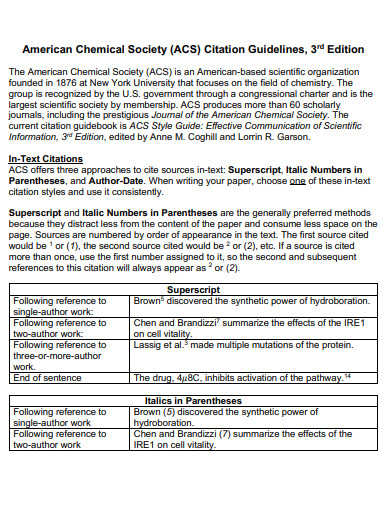
clas.ucdenver.edu
2. ACS Citation Source Example
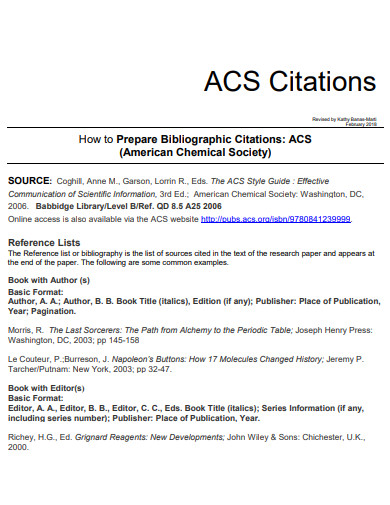
lib.uconn.edu
3. ACS Citation Superscript Example
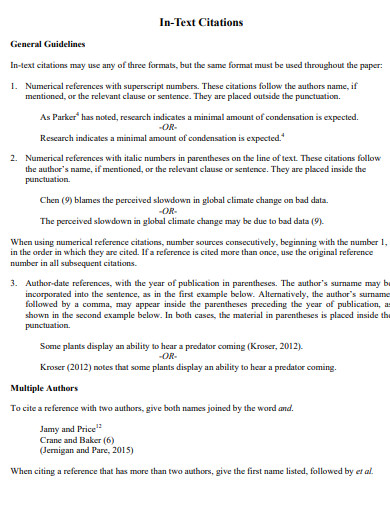
writingcenter.mst.edu
4. ACS Citation Book Example
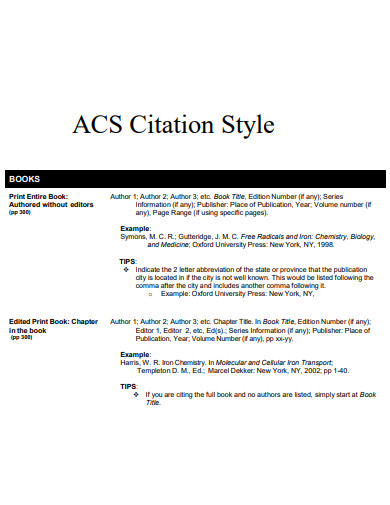
library.cms.ok.ubc.ca
5. ACS Citation Article Example
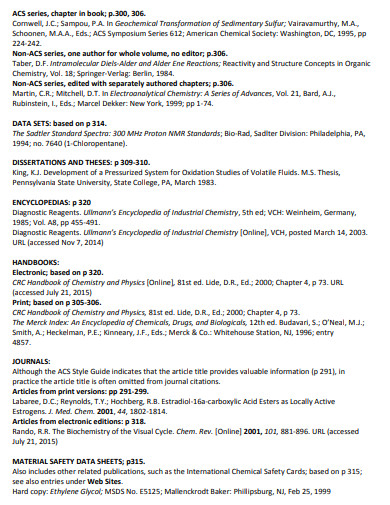
unbc.ca
6. ACS Citation Website Example
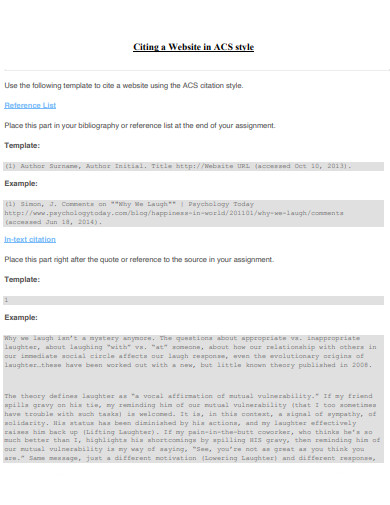
ju.edu.sa
7. ACS Citation Reference Example
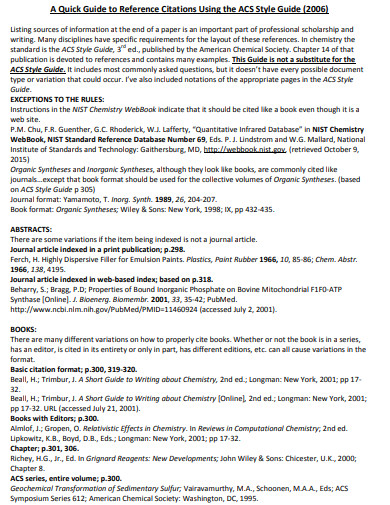
unbc.ca
8. ACS Citation Intext Example
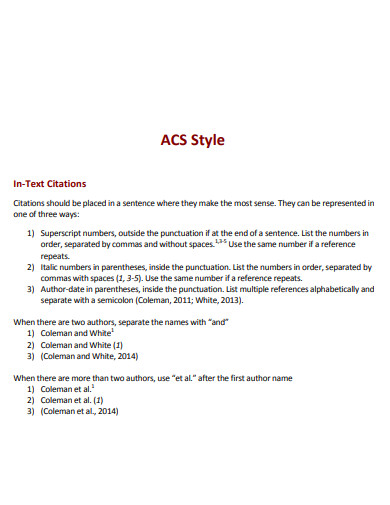
mcgill.ca
9. ACS Citation Bibliography Example
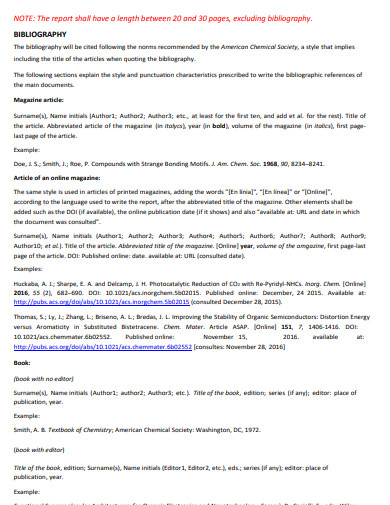
uv.es
10. ACS Citation Chemistry Example
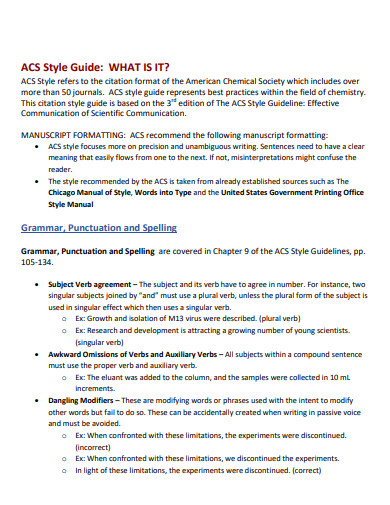
csuci.edu
11. ACS Citation Text Citation Example
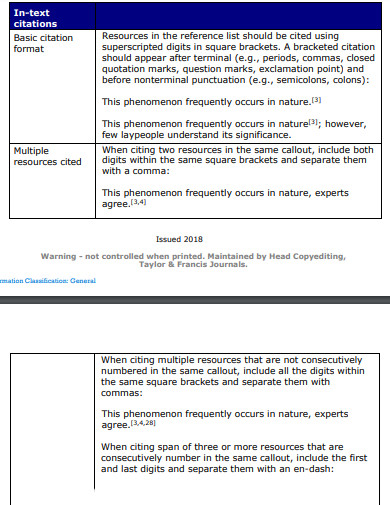
files.taylorandfrancis.com
12. ACS Citation Lab Manual Example
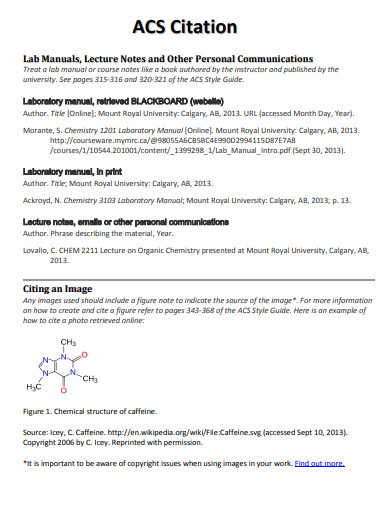
mtroyal.ca
13. ACS Citation Page Example
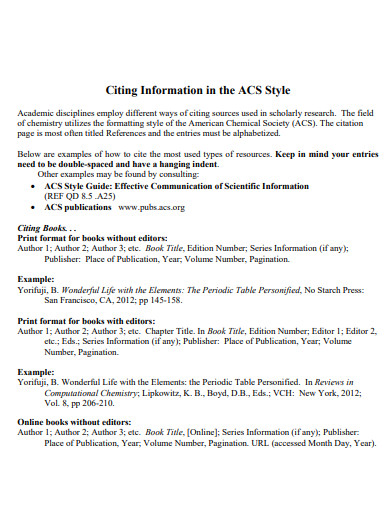
cgc.edu
14. ACS Citation Style Guide Example
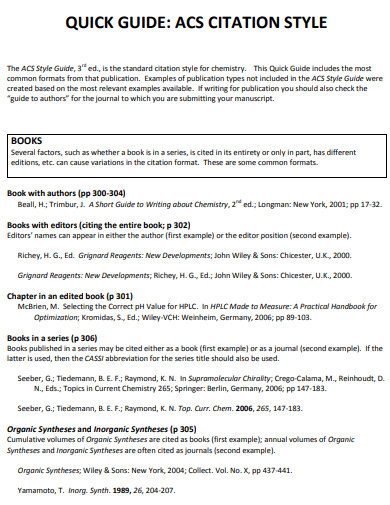
bsqm.org.mx
15. ACS Citation Paper Example

wm.edu
16. APA Table Checklist Example
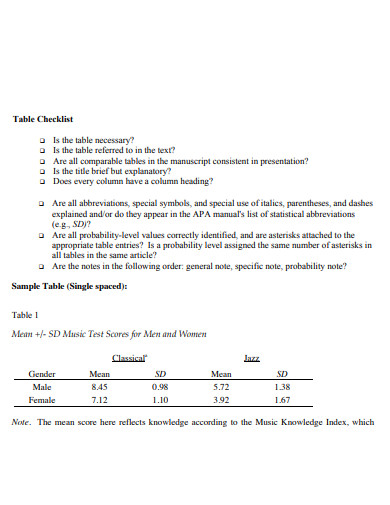
psych.uw.edu
17. APA Style Citation Example

library.udel.edu
18. ACS Citation Patent Example
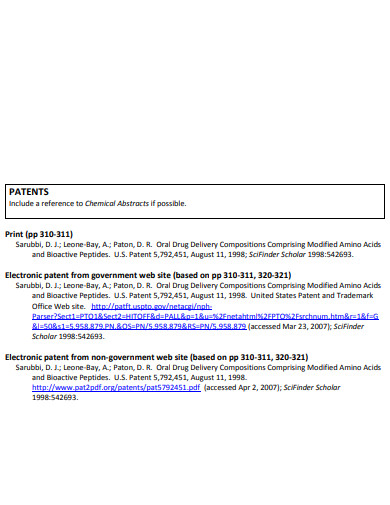
wm.edu
19. Proper ACS Citation Example
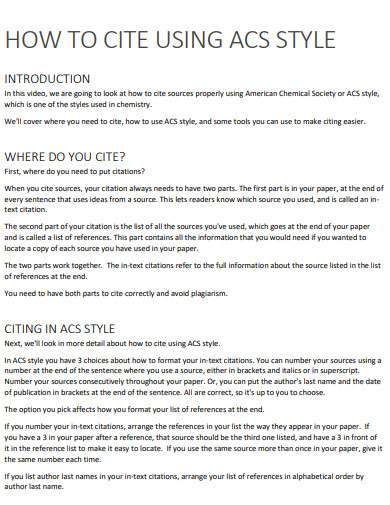
library.wlu.ca
20. ACS Citation Style Website Example
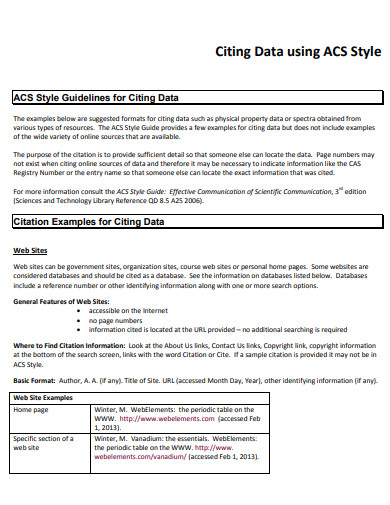
umanitoba.ca
21. ACS Citation Introduction Example
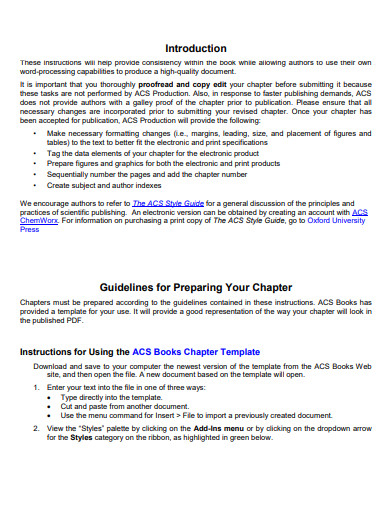
pubs.acs.org
22. ACS Quick Citation Example
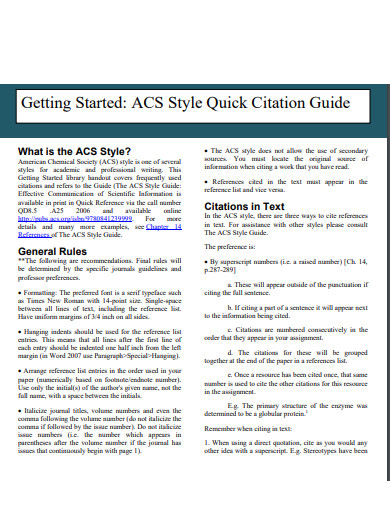
library.wlu.ca
23. ACS Citation Overview Example
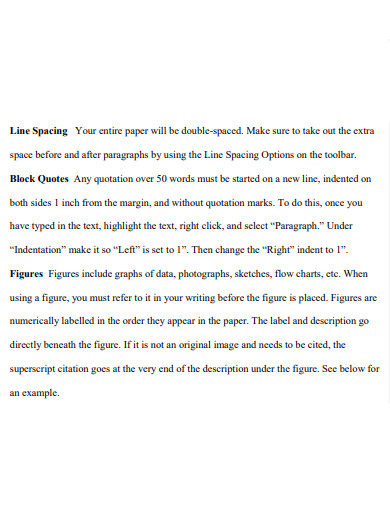
pittstate.edu
24. ACS Citation Reference Guide
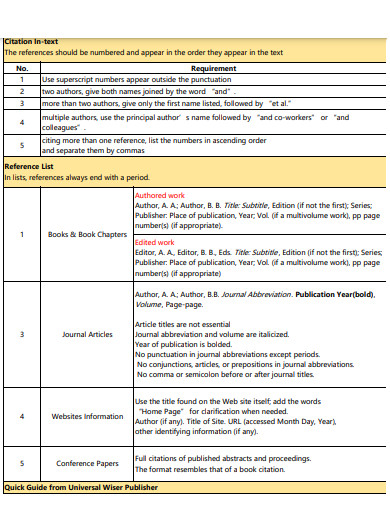
wiserpub.com
25. ACS Citation Style Examples
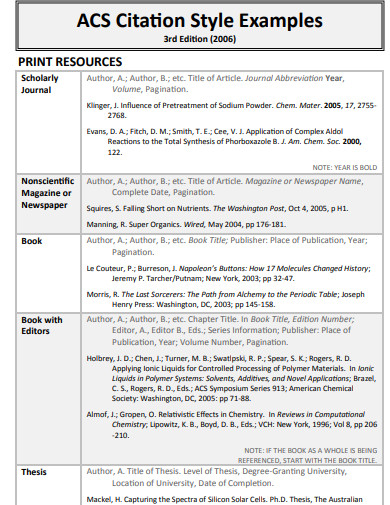
sharkpapers.com
26. ACS Citation Format
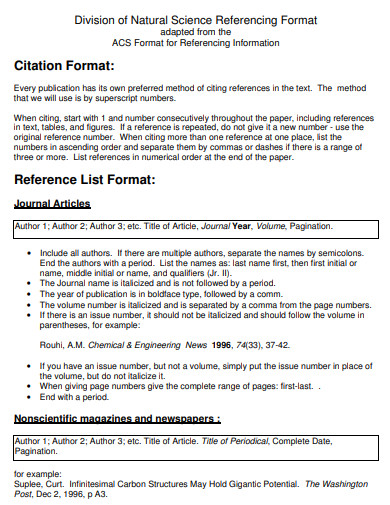
msmc.s3.amazonaws.com
27. ACS Citation Reference Style Example
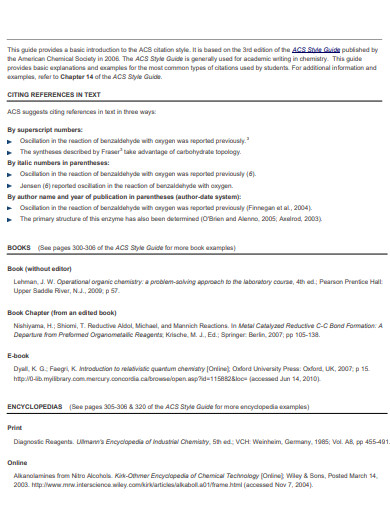
concordia.ca
28. Basic ACS Citation Example
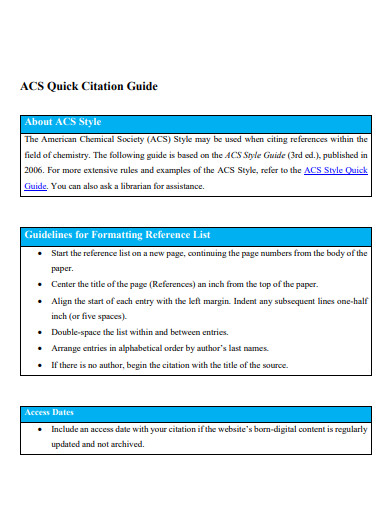
docs.bartonccc.edu
29. ACS Citation Reports Example
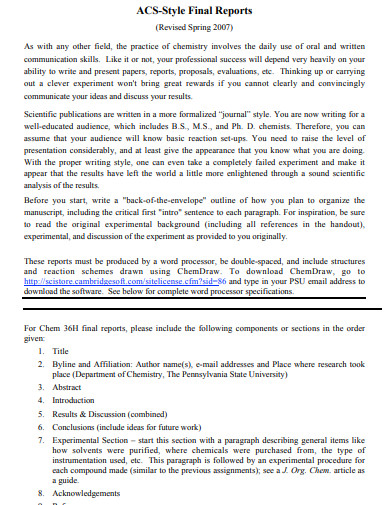
myperfectwords.com
30. Standard ACS Citation Example
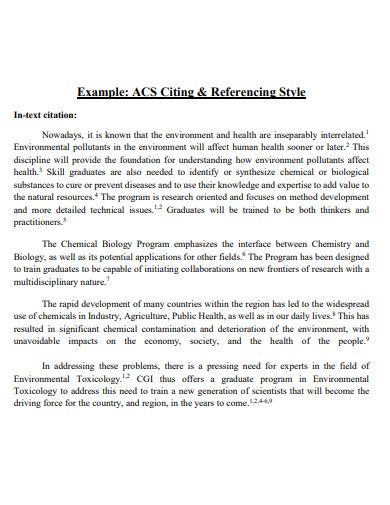
cgi.ac.th
What is ACS Citation?
ACS citation, also known as the American Chemical Society citation style, is a set of rules and guidelines used by researchers in the field of chemistry and related disciplines to cite and reference sources accurately in their academic papers and publications. ACS citation ensures consistency, clarity, and credibility by providing a standardized format for acknowledging the ideas and work of others within the scientific community.
How to write in ACS Citation
The art of writing a citation in ACS style may initially seem daunting, but with the right approach, it can become second nature. Understanding the principles and components of ACS citation is crucial for presenting your research ethically and effectively. Let’s explore the key elements and learn how to craft impeccable citations that conform to ACS guidelines.
Step 1: Identify the Type of Source
Determine the category of the source you wish to cite, such as a journal article, book, website, or conference paper.
Step 2: Gather Essential Information
Gather all the necessary details about the source, including the author’s name, title, publication date, journal or book title, page numbers, and any additional information required by ACS guidelines.
Step 3: Arrange the Information
Follow the prescribed ACS citation format for the specific type of source. Organize the elements in a logical sequence, ensuring consistency and accuracy.
Step 4: Apply In-Text Citations
Incorporate in-text citations within the main body of your paper, referring to the corresponding entry in your reference list or bibliography.
Step 5: Construct the Reference List
Compile a comprehensive list of all the sources you have cited in your paper. Adhere to ACS formatting guidelines, including proper capitalization, punctuation, and indentation.
Step 6: Review and Revise
Take the time to review your citations and reference list meticulously, verifying the accuracy of every detail. Make any necessary revisions to ensure compliance with ACS citation rules.
FAQs
How can I learn more about MLA in-text citations?
To gain further insights into MLA in-text citation, you can read an informative article on the subject right here.
What is the difference between a parenthetical citation and an ACS citation?
Parenthetical citation is a referencing style commonly used in humanities disciplines, such as MLA citation and APA citation. ACS citation, on the other hand, is specifically tailored for the field of chemistry and related sciences, offering its own unique formatting rules and requirements.
Where can I find examples of Chicago-style bibliography?
For a comprehensive collection of 29+ Chicago-style bibliography examples in PDF format, be sure to check out the resource link here.
In conclusion, mastering ACS citation is a valuable skill for any researcher or student in the field of chemistry. By following the step-by-step guide provided in this article and exploring the wide array of ACS citation examples available, you’ll elevate the quality and credibility of your academic work. So, embrace the art of accurate referencing, familiarize yourself with research paper formats and journal paper formats, and ensure that your ideas are properly acknowledged through ACS citation. Let your scholarly journey shine with integrity and precision.


